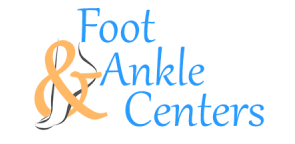Top 5 Recommended Exercises if You Have Haglund's Deformity
Do you suffer from heel pain caused by Haglund's deformity? We understand how frustrating and debilitating it can be to experience discomfort and inflammation in your heel, especially when it limits mobility and physical activity.
Don't worry — we've compiled some proven exercises to help alleviate your pain and promote healing.
From foot stretches to exercises for heel pain, we've got the answer to avoiding surgery for this syndrome. And we'll provide a bit of background on the condition, including how to recognize its signs and symptoms.
What is Haglund's Syndrome?
It refers to a bony abnormality that forms a bump on the heel's back where the Achilles tendon inserts. Sometimes called a "pump bump," it is associated with wearing pumps or other shoes with a rigid back.
Common causes include genetics, foot structure, and the type of shoes worn. Together, these factors irritate the soft tissues at the heel, leading to thickening and, eventually, the development of bone spurs.
The condition is more common in women than men, often affecting athletes and dancers. In addition, it also occurs in individuals with high foot arches or a tight Achilles tendon.
Signs and Symptoms of Haglund's Heel Deformity
The most common symptom is pain and tenderness in the back of the heel, which may worsen with pressure or friction from shoes. Other signs and symptoms include:
Swelling and redness around the affected area
A visible bump on the heel's back
Stiffness in the heel, especially in the morning or after periods of rest
Difficulty wearing certain types of shoes, such as high heels or shoes with rigid backs
Limited range of motion in the ankle
If you are experiencing symptoms, seeking medical attention for an accurate diagnosis and treatment plan, including Haglund's deformity surgery if necessary, is crucial. Untreated cases can result in chronic pain and potential surgical intervention.
5 Types of Exercises for this Syndrome
Exercise is an effective way to alleviate pain and promote healing in individuals with this condition. Here are five recommended exercises for this condition, along with step-by-step instructions on how to do each one:
1. Standing Heel Raises
Stand with your feet shoulder-width apart and your hands on your hips or a sturdy surface for balance.
Slowly raise your heels off the ground, pushing up onto the balls of your feet.
Hold for a few seconds, then lower your heels to the ground.
Repeat for 10-15 repetitions.
2. Calf Stretches
Stand facing a wall with your hands on the wall for support.
Step one foot back and keep your heel on the ground.
Perform foot stretches by lowering your heels to the ground while keeping your back straight as you lean forward. You should feel a stretch in your back foot.
Hold for 30 seconds and repeat on the other side.
3. Heel Drops
Stand on a raised surface, such as a step, with the balls of your feet on the edge and your heels hanging off.
Slowly lower your heels below the level of the step, feeling a stretch in your calf muscles.
Lift your heels back up to the level of the step.
Repeat for 10-15 repetitions.
4. Towel Scrunches
Sit on a chair with your legs straight out in front of you.
Use your toes to grasp the towel.
Pull the towel towards you to perform heel stretches, stretching the bottom of your foot and calf muscles.
Hold for 30 seconds and repeat on the other side.
5. Heel Cord Stretch
Stand facing a wall with your hands on the wall for support.
Place one foot behind the other and keep both heels on the ground.
Bend your front knee and lean into the wall to stretch the back leg.
Hold for 30 seconds and repeat on the other side.
Remember to start slowly and gradually increase the intensity and duration of your exercises over time. Consult a healthcare provider before beginning any new exercise program, especially if you have a pre-existing condition like Haglund's heel.
Best Equipment for Exercising
If you have this condition, using certain equipment during exercise can help reduce discomfort and improve your range of motion. Here are some of the best types of equipment for exercising:
Foot pedal exerciser
This low-impact exercise machine allows you to work on ankle and foot mobility while seated.
Foam rollers
These can be used to gently massage and stretch the muscles in your calves and feet.
Calf stretching blocks
Use these blocks to perform calf stretches more comfortably and effectively.
Arch support inserts
Adding arch supports to your shoes can provide extra cushioning and relieve pressure and tension on the back of the heel.
Speak to your podiatrist or physical therapist to determine which equipment suits your needs.
Haglund's Deformity Treatment and Exercises at Foot and Ankle Centers
At Foot and Ankle Centers, we offer comprehensive treatment for all foot conditions, including exercise therapy. Our team of experienced podiatrists can evaluate your condition and create a personalized treatment plan that may include exercises, medications, custom orthotics, and surgery if necessary.
We offer state-of-the-art facilities and advanced treatment options to ensure you receive the best possible care. If you are experiencing heel pain or suspect that you may have Haglund's deformity, don't wait to seek treatment.
Contact us today to schedule an appointment and take the first step toward relief. Our team of experts is ready to help you get back on your feet and regain your mobility.


